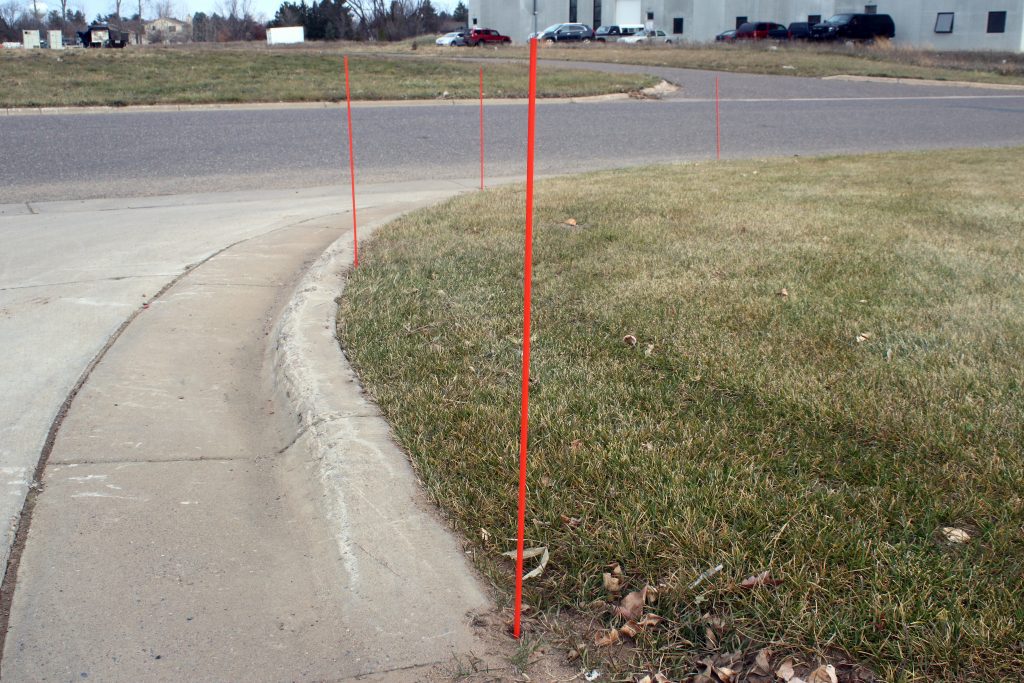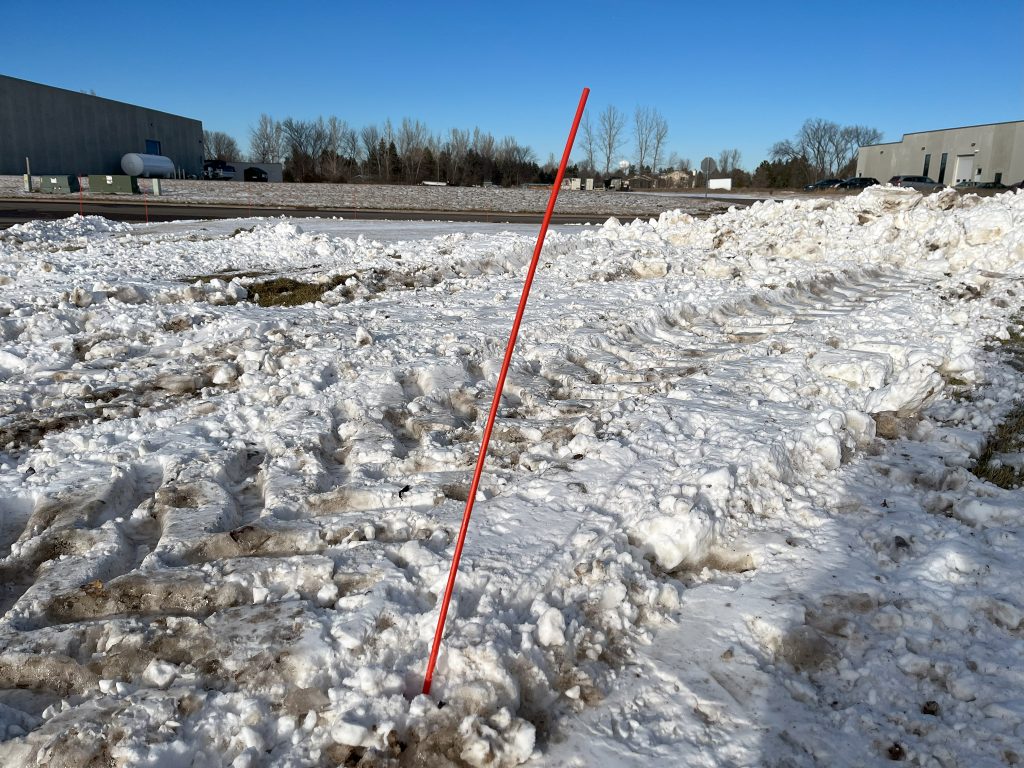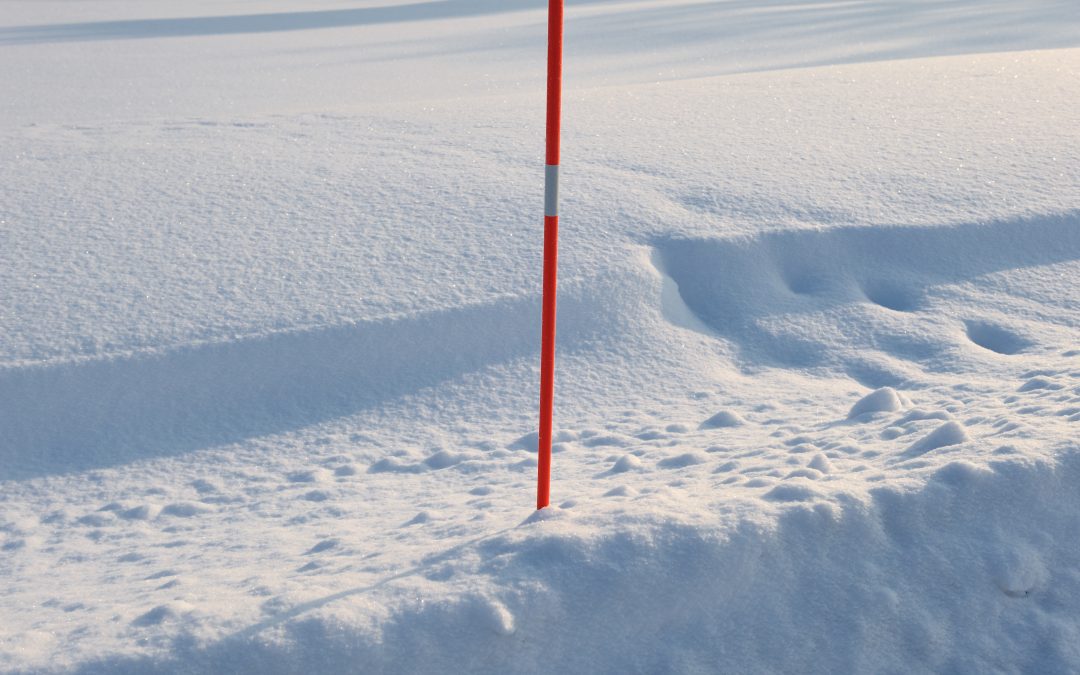At first glance, you may think that the longer the snow stake the better. Afterall, if you live in a place like Milwaukee, Detroit or Pittsburgh, that receives more than 40 inches of snow per year, you might think you’ll need stakes that will be at least 4 feet long so the stakes will still be visible – even with 40 inches of snow on the ground. For places with even more snow like Boston, Minneapolis or Salt Lake City, many people think they need snow stakes that are 5, 6 or even 8 feet long.
That simply isn’t true. In most cases, 26- to 36-inch snow stakes can be even better for marking driveways – unless, of course, you receive individual snowstorms that dump in excess of 2 feet of snow per storm.
How can that be you ask?
Why you don’t need 48-inch or longer snow stakes
Plowing snow is not like molding clay. Snowflakes and snow crystals are independent particles, not unlike sand or dirt. Sure, when it gets wet or melts partially, multiple flakes stick together, and some packing and molding can take place – just like dirt turns to mud and can pack when it gets wet and how you can build sand sculptures out of wet sand.
In each of these cases, once those ideal “sculpting” conditions go away the individual particles break apart again and the sculpture crumbles. When frozen snow is plowed, some packing occurs, but ultimately, the snow does not pile with straight vertical sides because it does break apart. As the snow piles, it generally peaks in the center and then “landslides” on the sides, creating a pyramid-shaped snowbank with low sides.
This means, to keep snow off a plowed driveway, parking lot or roadway, the peaks of these snowbanks or piles need to be well off the edge of the cleared areas to allow for those snow slides. This results in the snow being pretty shallow at the edge of the driveway, etc., where the stakes will be placed.
Even if there is a curb in place, causing the stakes to be placed farther back, it’s unlikely the snow will be deeper than 6-9 inches at the location of the stakes – if the stakes are placed against the back side of the curb. In reality, as long as the stake is at least a few inches taller than the fresh snowfall, you’re likely going to still see it.

Disadvantages of Long Snow Stakes
While people often look for 48-inch, 60-inch or 72-inch driveway markers, it’s generally unnecessary. In fact, snow stakes of that length often bring with them other downsides, in addition to being more expensive.
The longer the snow stake the more rigid it must be in order to stay standing up straight and tall. In order to accomplish this, the stakes are often made of materials such as fiberglass, metal or wood. If you do find a flexible material, such as plastic, the diameter of the stake needs to increase with its length in order to stay sturdy. These types of snow stakes are notorious for kinking, splintering or breaking off when they come in contact with a snow plow, or get run over by a tire.
That means if you need to push a snowbank back either by drive off the plowed surface or benching the snow with a wing plow, you’re likely going to render the stakes useless because of the damage caused by the plows or tires.
Advantages of Shorter Snow Stakes

KAGE’s flexible plastic snow stake rebounds after being run over.
With KAGE’s high-visibility flexible plastic snow stakes, you can plow back or bench the snowbanks to prevent snow from sliding back onto the driveway, parking lot or road. Even if you have to hit the stakes with the plow or drive over them, the stakes are designed to absorb impact and bend without being pulled from the ground until they can return back to their original position. This allows the stakes to serve their intended purpose all winter long while saving you money and hassle along the way.
If for some reason, you do damage the KAGE snow stakes, you can simply cut off the damaged area and re-use the stakes. KAGE stakes are available in 26-, 32-, and 36-inch lengths. If you’re looking to get the longest-term use of the stakes, the 36-inch orange driveway markers will give you the most opportunities to trim and keep using them. If saving money up front is your primary goal, the 26-inch stakes will serve you best.
Keep in mind, that when installed using the KAGE snow stake installation tool, the stakes will be set 5 inches into the ground, meaning a 26-inch stake will actually have only 21 inches visible above ground.
Another major advantage of using KAGE snow stakes is that they are much lighter weight than fiberglass, metal or wooden stakes – especially if you are considering stakes that are 4 feet or longer. KAGE stakes save weight both on the amount material need and the material type, making them easy to carry in a KAGE stake quiver. The quiver allows you to carry up to 120 snow stakes at one time!
What length snow stake is right for me?
If you want to make the job of marking your driveway or parking lot for snow plowing the most cost effective and time efficient, you’ll need to take into account the amount of snowfall you’ll get in any given storm and then add about a foot. That gives you some wiggle room to accommodate both sinking the stake into the ground and sticking up above the fresh snow.
For instance, if you live or work in an area that generally receives 13 inches of snow or less in your larger storms, a 26-inch snow stake is probably plenty long. If your biggest snowstorms fall in the 14- to 20-inch range, you’ll want to upgrade to 32-inch or longer stakes.
If you’re one of those lucky folks who live where it’s common for you to get more than 24 inches of snow at a time, flexible snow stakes are likely not a good option for you. You’ll want rigid snow stakes that are 4 feet or longer to make sure they are visible when you need them most.
Remember. Bigger isn’t always better. Sometimes it just means working harder.



Recent Comments